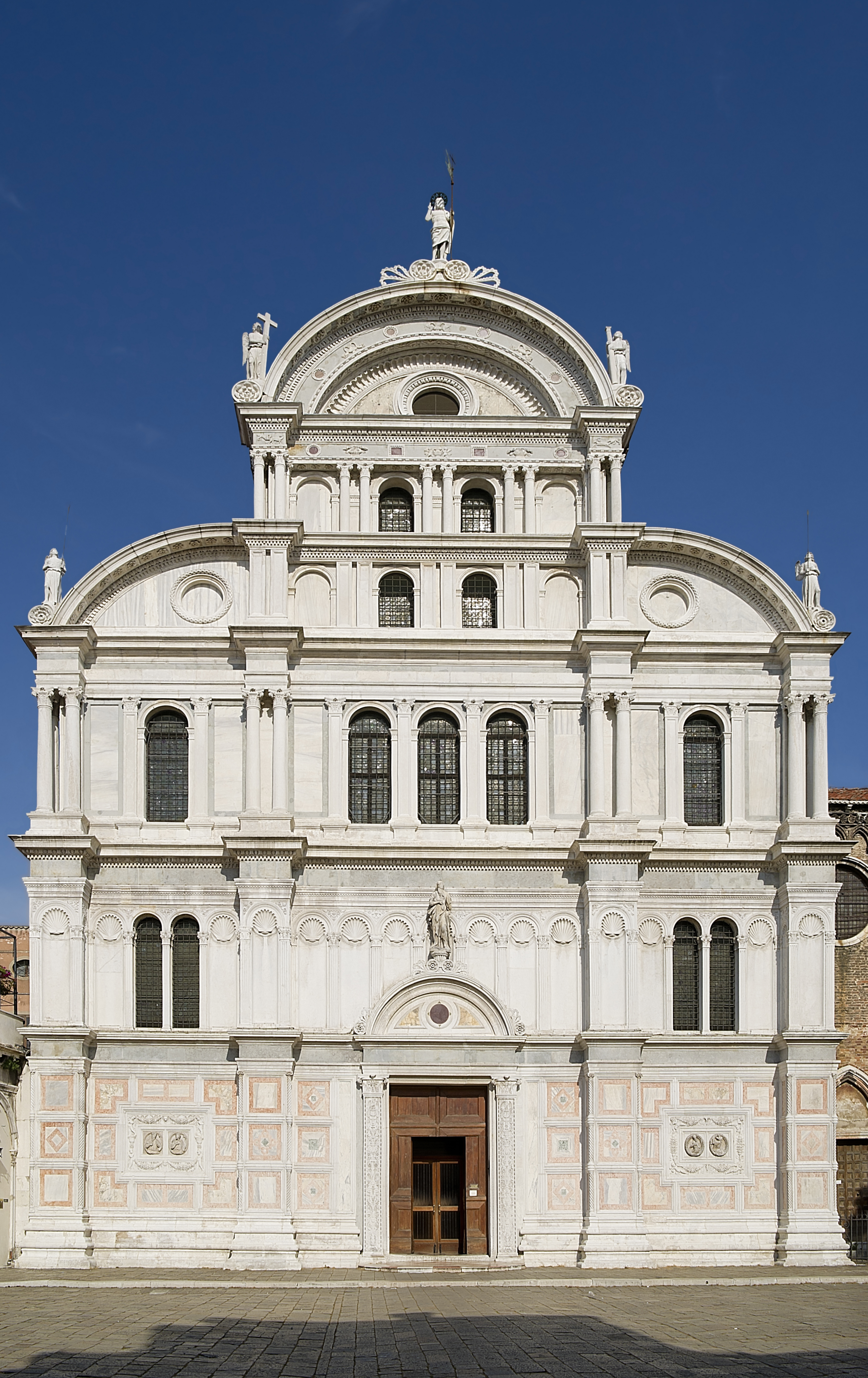Istrian Stone on:
[Wikipedia]
[Google]
[Amazon]
 Istrian stone, ''pietra d'Istria'', the characteristic group of building stones in the architecture of
Istrian stone, ''pietra d'Istria'', the characteristic group of building stones in the architecture of  Venice, isolated in its lagoon, had no building stone at hand. The freshly quarried stone is salt-white or light yellowish, which weathers to a pale gray; the whiteness of Istrian stone contrasts well with coloured stones and brick. When Francesco, son of the architect Jacopo Sansovino, wrote ''Venetia citta nobilissima et singolare'' (1580) he emphasized the distinctive quality that Istrian stone and the coppery-red Verona ''brocatello'' limestone (so-called '' Veronese marble'') lent to the city.Paul Hills, ''Venetian Colour: marble, mosaic, painting and glass, 1250-1550'', 1999:65 It was brought, Sansovino said, from Rovigno and Brioni on the Istrian coast.
Venice, isolated in its lagoon, had no building stone at hand. The freshly quarried stone is salt-white or light yellowish, which weathers to a pale gray; the whiteness of Istrian stone contrasts well with coloured stones and brick. When Francesco, son of the architect Jacopo Sansovino, wrote ''Venetia citta nobilissima et singolare'' (1580) he emphasized the distinctive quality that Istrian stone and the coppery-red Verona ''brocatello'' limestone (so-called '' Veronese marble'') lent to the city.Paul Hills, ''Venetian Colour: marble, mosaic, painting and glass, 1250-1550'', 1999:65 It was brought, Sansovino said, from Rovigno and Brioni on the Istrian coast.
Dean Krmac: La pietra d'Istria e Venezia.
(ital.)
Comune di Grisignana d'Istria (Grožnjan)
(ital.) Limestone
 Istrian stone, ''pietra d'Istria'', the characteristic group of building stones in the architecture of
Istrian stone, ''pietra d'Istria'', the characteristic group of building stones in the architecture of Venice
Venice ( ; it, Venezia ; vec, Venesia or ) is a city in northeastern Italy and the capital of the Veneto Regions of Italy, region. It is built on a group of 118 small islands that are separated by canals and linked by over 400 ...
, Istria and Dalmatia
Dalmatia (; hr, Dalmacija ; it, Dalmazia; see names in other languages) is one of the four historical regions of Croatia, alongside Croatia proper, Slavonia, and Istria. Dalmatia is a narrow belt of the east shore of the Adriatic Sea, str ...
, is a dense type of impermeable limestone
Limestone ( calcium carbonate ) is a type of carbonate sedimentary rock which is the main source of the material lime. It is composed mostly of the minerals calcite and aragonite, which are different crystal forms of . Limestone forms w ...
s that was quarried in Istria, nowadays Croatia
, image_flag = Flag of Croatia.svg
, image_coat = Coat of arms of Croatia.svg
, anthem = " Lijepa naša domovino"("Our Beautiful Homeland")
, image_map =
, map_caption =
, capi ...
; between Portorož and Pula. Limestone is a biogenetic stone composed of calcium carbonate from the tests and shells of marine creatures laid down over eons. Istrian stone approaches the compressive strength and density of marble
Marble is a metamorphic rock composed of recrystallized carbonate minerals, most commonly calcite or dolomite. Marble is typically not foliated (layered), although there are exceptions. In geology, the term ''marble'' refers to metamorphose ...
, which is metamorphosed limestone. It is often loosely referred to as "marble", which is not strictly correct.
 Venice, isolated in its lagoon, had no building stone at hand. The freshly quarried stone is salt-white or light yellowish, which weathers to a pale gray; the whiteness of Istrian stone contrasts well with coloured stones and brick. When Francesco, son of the architect Jacopo Sansovino, wrote ''Venetia citta nobilissima et singolare'' (1580) he emphasized the distinctive quality that Istrian stone and the coppery-red Verona ''brocatello'' limestone (so-called '' Veronese marble'') lent to the city.Paul Hills, ''Venetian Colour: marble, mosaic, painting and glass, 1250-1550'', 1999:65 It was brought, Sansovino said, from Rovigno and Brioni on the Istrian coast.
Venice, isolated in its lagoon, had no building stone at hand. The freshly quarried stone is salt-white or light yellowish, which weathers to a pale gray; the whiteness of Istrian stone contrasts well with coloured stones and brick. When Francesco, son of the architect Jacopo Sansovino, wrote ''Venetia citta nobilissima et singolare'' (1580) he emphasized the distinctive quality that Istrian stone and the coppery-red Verona ''brocatello'' limestone (so-called '' Veronese marble'') lent to the city.Paul Hills, ''Venetian Colour: marble, mosaic, painting and glass, 1250-1550'', 1999:65 It was brought, Sansovino said, from Rovigno and Brioni on the Istrian coast.
Notes
{{reflistSee also
* List of types of limestoneExternal links
Dean Krmac: La pietra d'Istria e Venezia.
(ital.)
Comune di Grisignana d'Istria (Grožnjan)
(ital.) Limestone